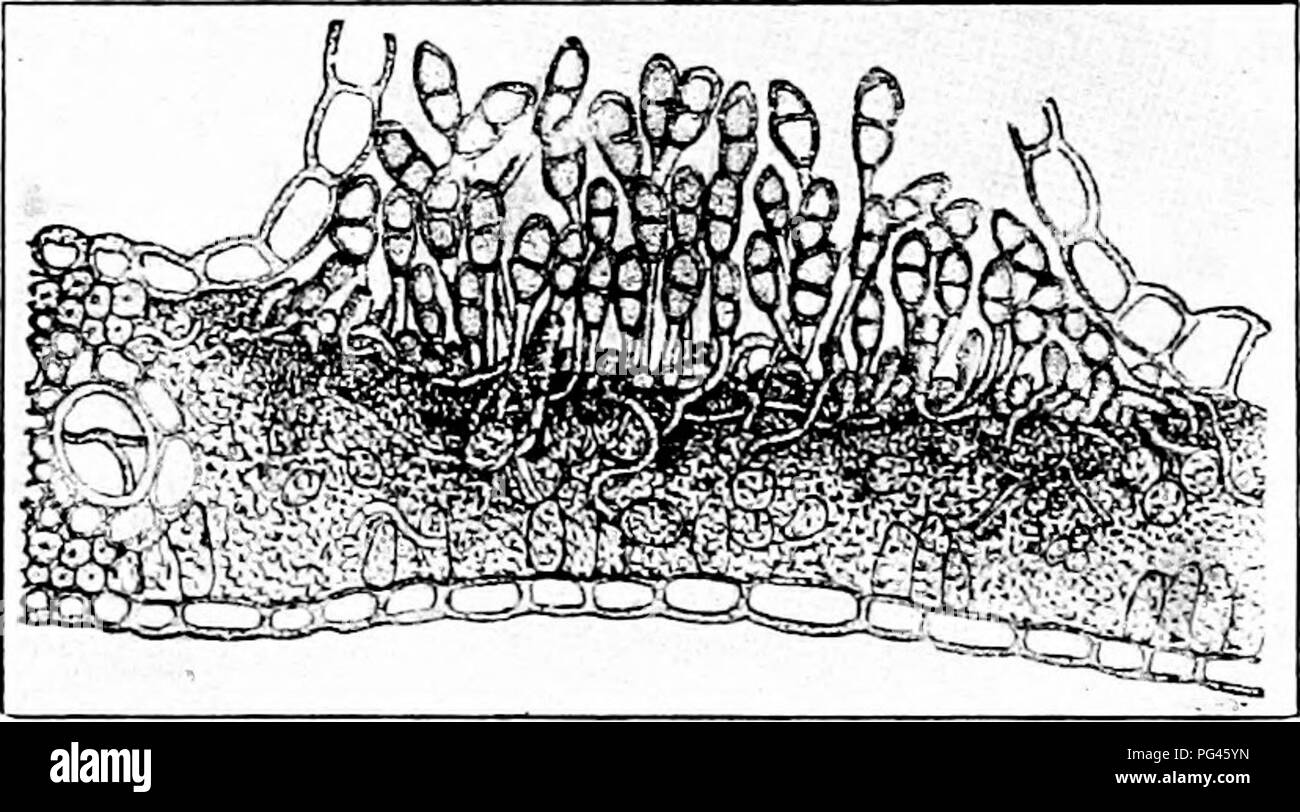. The fungi which cause plant disease . Plant diseases; Fungi. 384 THE FUNGI WHICH CAUSE PLANT DISEASE P. simplex (Korn.) Er. & He. I. Unknown. II and III on barley in Europe and seemingly of recent intro- duction into the United States.'*"^ One of the least important of the grain rusts. Mesospores are common. P. sorghi Schw.^s" I (=^. oxalidis). Peridia hypophyllous, rarely amphigenous, crowded, concentric, epispore smooth, 24-28 fi. II. Uredinia amphigenous, numerous, often confluent; spores globose to ovate, 23-30 x 22-26 mm., slightly verrucose.. Fig. 277.—Puccinia aorghi. Af

Image details
Contributor:
Central Historic Books / Alamy Stock PhotoImage ID:
PG45YNFile size:
7.1 MB (413.3 KB Compressed download)Releases:
Model - no | Property - noDo I need a release?Dimensions:
2121 x 1178 px | 35.9 x 19.9 cm | 14.1 x 7.9 inches | 150dpiMore information:
This image is a public domain image, which means either that copyright has expired in the image or the copyright holder has waived their copyright. Alamy charges you a fee for access to the high resolution copy of the image.
This image could have imperfections as it’s either historical or reportage.
. The fungi which cause plant disease . Plant diseases; Fungi. 384 THE FUNGI WHICH CAUSE PLANT DISEASE P. simplex (Korn.) Er. & He. I. Unknown. II and III on barley in Europe and seemingly of recent intro- duction into the United States.'*"^ One of the least important of the grain rusts. Mesospores are common. P. sorghi Schw.^s" I (=^. oxalidis). Peridia hypophyllous, rarely amphigenous, crowded, concentric, epispore smooth, 24-28 fi. II. Uredinia amphigenous, numerous, often confluent; spores globose to ovate, 23-30 x 22-26 mm., slightly verrucose.. Fig. 277.—Puccinia aorghi. After Scribner. III. Telia amphigenous, black. Spores ovate-oblong or clavate- obtuse, constricted. Epispore thick, 28^5 x 12-17 m, smooth, pedicel long, 5 ix, persistent. Heteroecious. O and I on Oxalis. II and III on Zea. Of little economic importance. The relation of the fecial stage was demonstrated by Arthur; '^ it is beheved, however, that hibernation is largely by the uredinio- spores. P. purpurea C. Amphigenous, spot purplish, sori irregular, dark-brown. II. Urediniospores ovate, 35 x 25-30 /j, smooth, brown. III. Teliospores elongate, ovate, brown, long-pedicellate, 40^5 X 22-25 M- On Sorghum in Southern United States and West Indies.. Please note that these images are extracted from scanned page images that may have been digitally enhanced for readability - coloration and appearance of these illustrations may not perfectly resemble the original work.. Stevens, Frank Lincoln, 1871-1934. New York : Macmillan